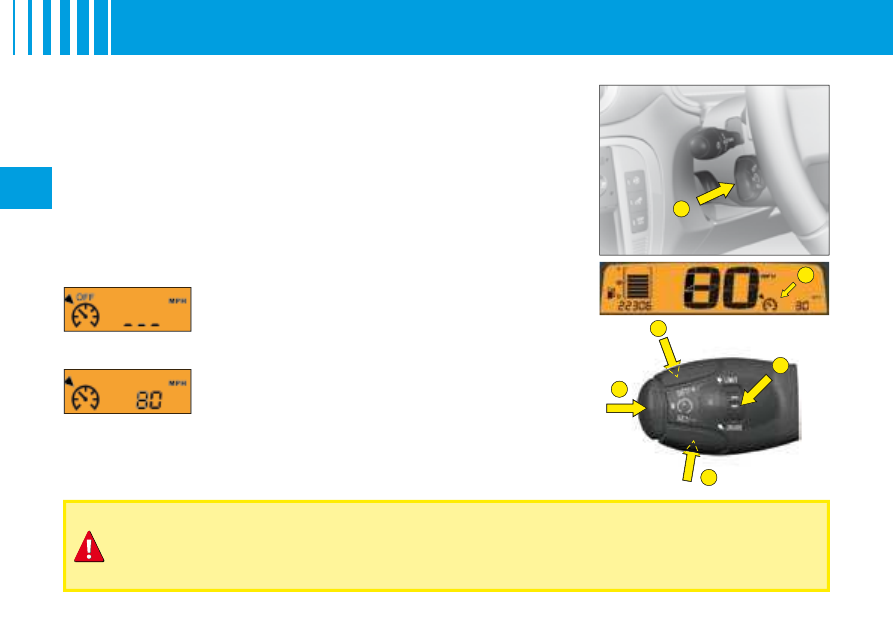Citroen C2 (2008 year). Instruction - part 4

A
B
1
4
3
2
II
66
C R U I S E C O N T R O L
Cruise control must only be used where the traffi c conditions permit driving at a constant speed.
Do not use it on congested roads or when the weather or the road conditions are poor.
This driving assistance function allows you to drive at the speed of your
choice without the need to action the accelerator.
This device is active at speeds above approx. 40 km/h (25 mph), in the
higher gears only.
The button A for cruise control is located on the lighting control stalk.
Remark: The information relating to the cruise control is displayed in
the instrument panel screen at B. This display causes the trip computer
information to disappear (if it is shown on the instrument panel).
To select the function
Turn the control 1 to the "CRUISE" position.
When you select the function via control 1, no speed
has yet been memorised.
To select a cruise speed
Accelerate to the desired speed, then give a short press on button 2 or
button 4.
The cruise speed is then memorised. It is shown in the
display on instrument panel B.
You can then release the accelerator pedal. The vehicle will automatically
keep to that chosen speed.
Remark: The vehicle speed may vary slightly from that memorised.